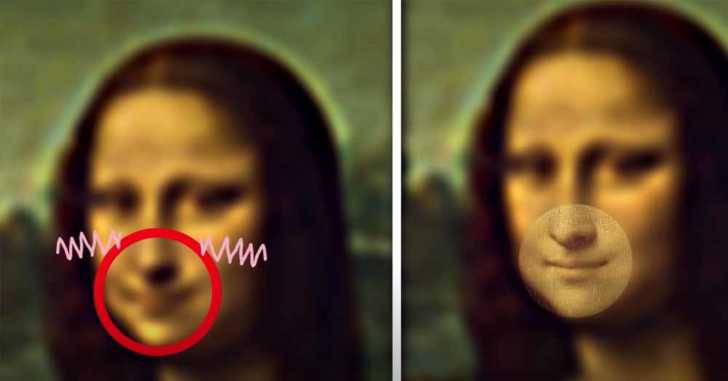The Mona Lisa is one of the most recognizable paintings in the world. Most of us know the basic facts about this classic work of art. It was painted by Leonardo da Vinci, it’s now considered a masterpiece of the Italian Renaissance, and of course, Mona Lisa’s enigmatic smile that still puzzles people today. However, there’s more to this painting than meets the eye, as is often the case with great works of art. Let’s dive in and see if we can uncover some of Mona Lisa’s secrets!
Humble Beginnings

Believe it or not, the Mona Lisa wasn’t always hailed as the masterpiece it is today. In fact, the painting was sold to King Francis I after da Vinci’s death in 1519 and even hung in the Louvre, but it didn’t become popular until a scandal in 1911.
A Frenchman, Vincenzo Peruggia, was hired by the Louvre to install protective glass cases on older paintings. He slipped the Mona Lisa into his coat and stole it right out from under their noses. He later claimed his intention was to return the painting to its rightful Italian home.

Authorities didn’t notice the painting was missing until a full twenty-six hours later. By that time, Vincenzo was long gone. The media exploded with news of the missing painting and tracked the progress of the investigation for twenty-eight months until the painting was finally returned.
The first two days after the Mona Lisa was reinstalled, over a hundred thousand people showed up to visit. These days, the Louvre has over ten million visitors annually.
Baby Bump

While no one knows the true identity of the woman in the portrait, most experts believe it to be Lisa Gherardini, wife of French merchant, Francesco Del Giocondo. The theory goes that he commissioned the painting as a way to commemorate the birth of their second son.
A few years ago, experts conducted a special scan of the Mona Lisa that was able to produce 3D images of large portions of the painting. Some of those scans suggest that the woman’s hands were crossed delicately over a baby bump.
Another fact that supports this theory is the vail she’s wearing. The colors in the original painting have darkened over the years, but with careful restoration techniques, we were able to see the vail more clearly around her head and shoulders. This type of garment was commonly worn by pregnant women during the Italian Renaissance.
Self-Portrait

Perhaps one of the reasons we still don’t know the identity of Mona Lisa is that it is actually a self-portrait. Sounds a bit off-the-wall, right? There’s actually a surprisingly strong case for this theory.
Lots of people say part of the mystery behind the woman is that she’s rather androgynous with a mix of masculine features, like a strong nose and pronounced forehead, and feminine features, like her lips and the shape of her eyes.
Historian Lillian Schwartz did a digital analysis of the painting alongside a portrait of da Vinci and found a shocking amount of similarities. A team of French art historians and scientists are currently petitioning the French government for permission to dig up da Vinci’s body and analyze is skull so they can use CGI to flesh him out and get a better picture of what he would have looked like. So far, the government hasn’t given them the green light.
The Smile Explained

Perhaps the most commonly used word when describing this painting is “enigmatic.” Nine times out of ten, this is referring to Mona Lisa’s famous smile. What makes this feature so unique? Why can’t people seem to decide if she’s hiding a secret, smiling, grimacing, or just shy?
Professor Margaret Livingstone suggests that she’s neither smiling nor grimacing, but in fact, it’s all a trick of the mind. She points out that when the observer focuses on the eyes, or other parts of the painting, for that matter, Mona Lisa’s smile seems more pronounced. However, if the observer focuses solely on the mouth, they’ll find that it doesn’t look like much of a smile at all.
Livingstone explains this is because of low spatial frequencies. In other words, how the eye focuses on something in its central vision versus its periphery. She says since the smile is has a particularly low spatial frequency, it often appears more dramatic when we don’t focus on it. It’s all a trick of the mind!
Find out more of Mona Lisa’s secrets in the video below!















